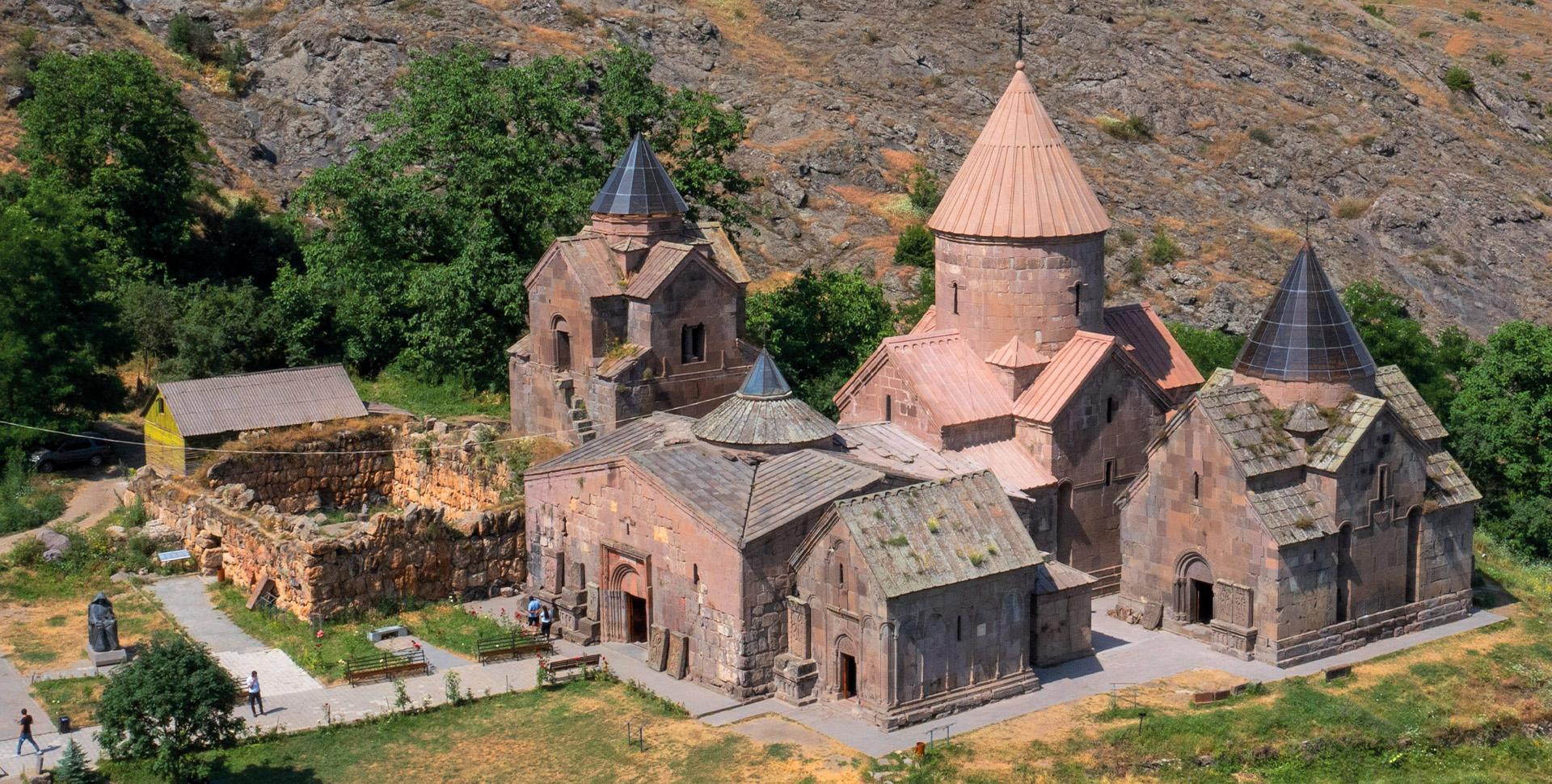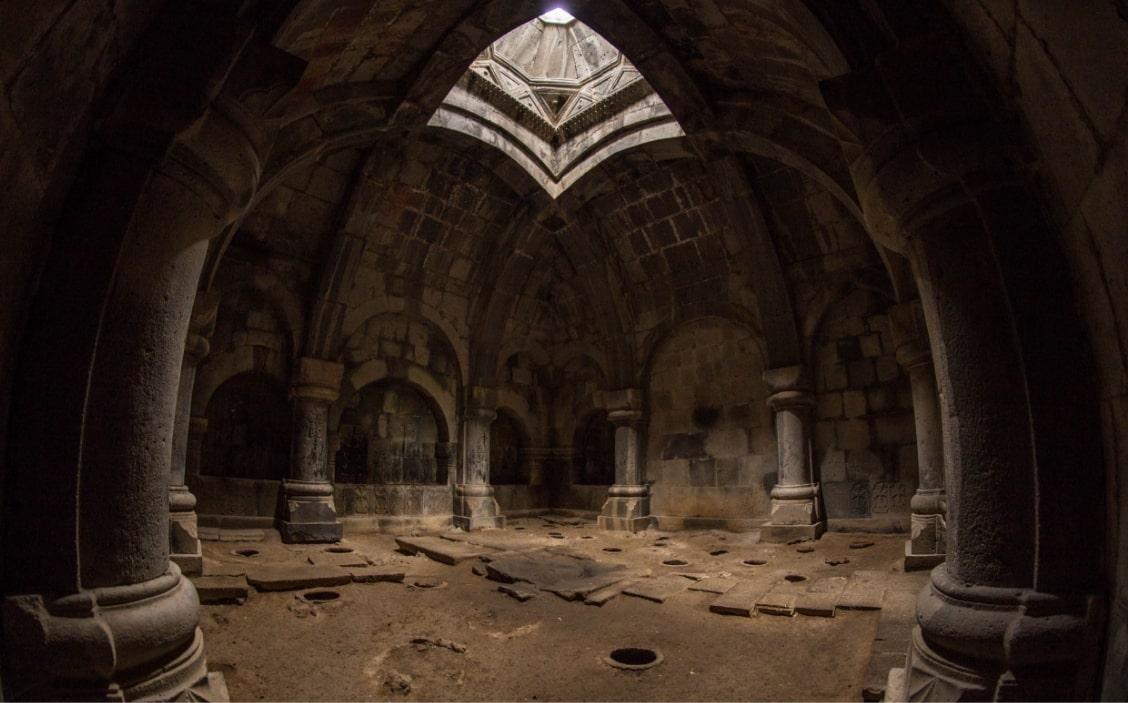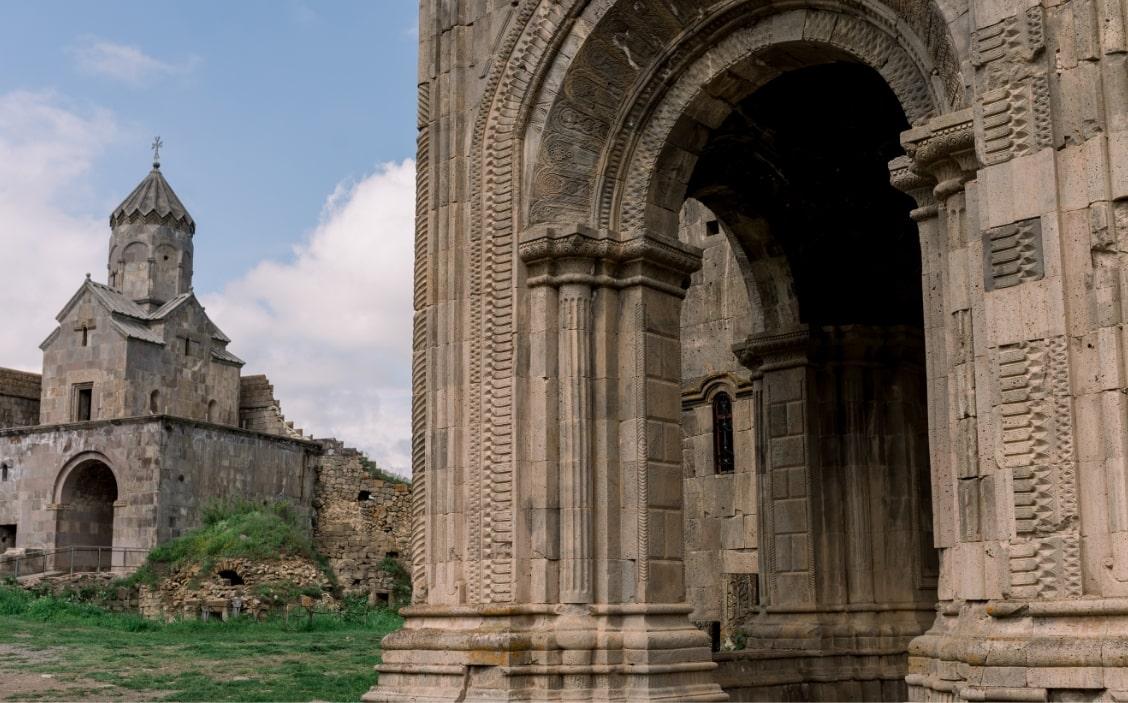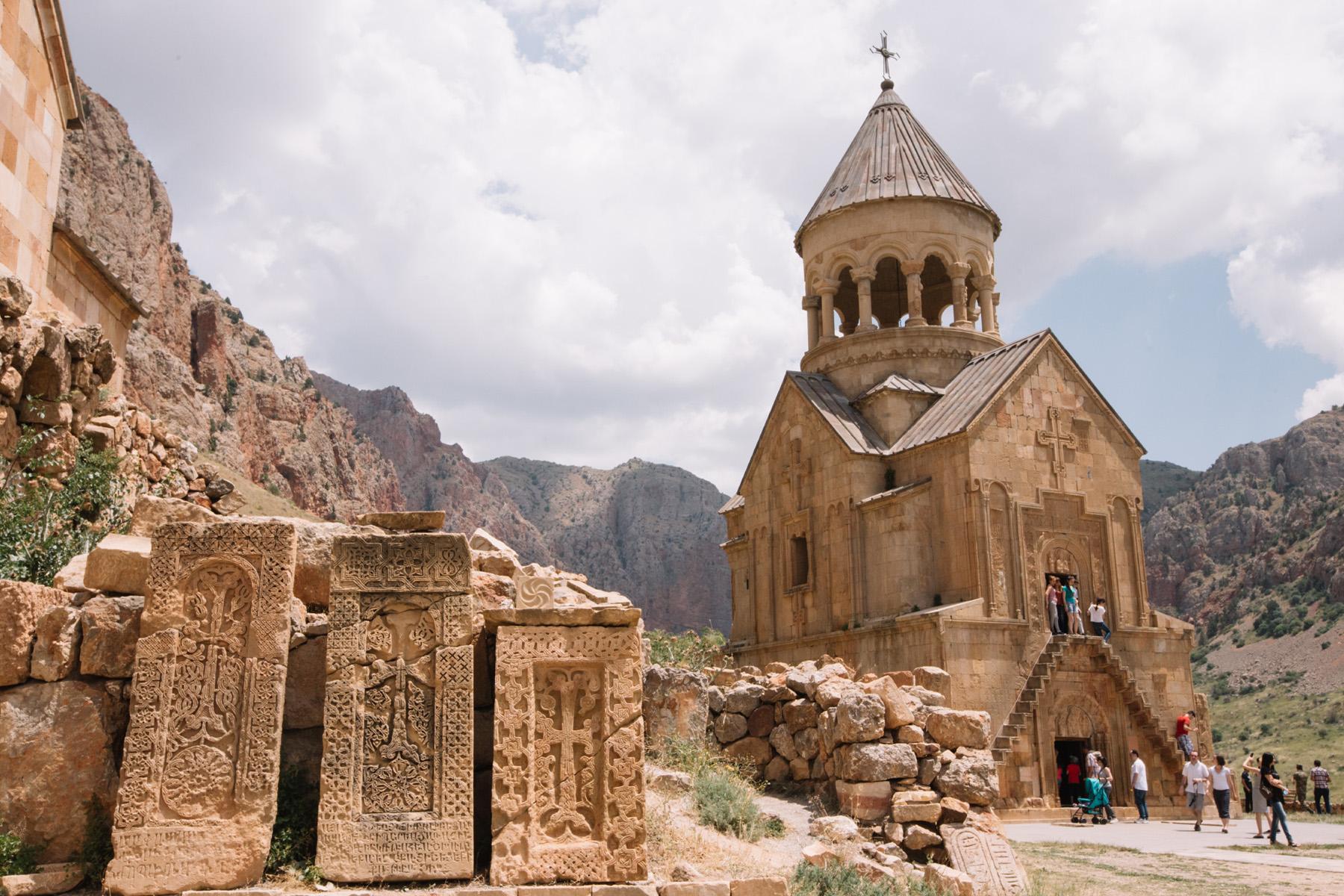Goshavank Monastery
Architectural style:
Armenian
Date of foundation:
12th - 13th centuries
Region
Tavush

The Goshavank Monastery is one of Armenia's most famous religious sites for a variety of reasons. Its fascinating location, surrounded by dense forests, the color palette of the buildings, the statue of Mkhitar Gosh (Armenian scholar, thinker, and writer), and the one-of-a-kind collection of embroidered khachkars (cross-stones) distinguish this destination from others.
If you haven't already grabbed your backpack and camera while booking your flight to Armenia, now is the time. Taxis can take you to Gosh village in the Tavush region, which is home to Goshavank. Your journey from Yerevan to Goshavank will take you through Dilijan, one of Armenia's most beautiful and green areas. You can also join a group tour or rent a car for the day. Take a look at the map and include a few other tourist attractions in your itinerary.
At Goshavank, you can truly feel the ancient spirit of this place, hinting at the numerous historical moments it has witnessed, yet surviving to this day. Enjoy the tranquility of one of the most significant religious sites in Armenia!
So, if you're traveling to the northeast of Armenia, make a stop at Lake Sevan to enjoy our "blue beauty." Hike to Matosavank and Jukhtak monasteries, or drive to Lake Parz, all hidden in the dense forests of Dilijan National Park. A 3 km hike from Goshavank Monastery will take you to Lake Gosh, a natural mountain lake in the forest - a truly magnificent sight.
The first thing you see when reaching Gosh village is the monastic complex, built with black tufa stone. It naturally merges with the surrounding dark color rocks and hills, demanding extra efforts to detect the monastery from a distance.
Getting closer to the monastery, you will see the statue of Mkhitar Gosh to the left of the complex. Mkhitar Gosh is the founder of the Goshavank Monastery, initially known as the monastery of Nor Getik. After Gosh’s death, the monastery was renamed Goshavank in 1213. He was a well-respected scholar, thinker, and writer. His famous writing is Datastanagirk (the Book of Law), which was used to solve judicial issues in medieval times. If you pay attention to his statue, you will notice the book on his legs and the scale of justice in his hand.
Face toward the monastic complex, and you will see the majority of the structures – the narthex of St. Astvatsatsin (Holy Virgin Mary) church in the middle, the scriptorium-belfry adjacent to it via an arch to the left, and the St. Grigor small church to the right of the narthex, where the domes of St. Astvatsatsin and St. Grigor churches are seen in the background – a harmonious group of religious structures from 12th to 13th centuries.
Not sure how to navigate the complex? No worries, here is a typical order for observing all of the complex's structures without jumping from one side of the monastery to the other.
Start touring from the main church and its narthex, then visit the scriptorium-belfry from the left, walk to the back side of the complex, visit St. Grigor church, observe the small chapels behind the St. Grigor Lusavorich (Gregory the Illuminator) church, and finish the tour in the complex by admiring the splendid decorations on this tiny church.
Monks and students at Goshavank’s school were copying the gospels and decorating books and manuscripts at the scriptorium-belfry. The St. Grigor church is an identical copy of the St. Astvatsatsin church in its architectural patterns and design. The windows of the chapel’s two cells are placed so that they face the two cross-stones carved on the western wall of St. Grigor church.
A massive embroidered khachkar (cross-stone) - the monastery's jewel - stands directly in front of the smallest church in the complex. The khachkar was carved in the 13th century by Poghos, the author of this masterpiece. You can admire the cross-impressive stone's lacework, which demonstrates the master's brilliance.
Originally, two such khachkars adorned the entrance to St. Grigor Lusavorich's small church, but one was taken to the Armenian History Museum. If you are in Yerevan and did not have the opportunity to visit Goshavank, you can get some Goshavank impressions by looking at the other khachkar in the museum.
While you are at the front of the monastic complex, you can shop at the nearby souvenir kiosks and use the opportunity to talk with the locals, enjoy their hospitality, and make memories.
You might think you’ve finished with the Goshavank Monastery, but there is still more to see. It only takes about 15 minutes to get to the village hillside with the St. Gevorg church and the Mkhitar Gosh mausoleum. This is another excellent opportunity to capture the entire beauty of the Goshavank Monastery from atop, making the climb worthwhile.
Getting to the top of the hill is worth all the effort – be sure to take your camera with you to capture some fascinating shots of the monastery!
Since Goshavank Monastery's main church St. Astvatsatsin is still active on Saturdays and Sundays, you can participate in the liturgy and feel the energy of this captivating religious site.



